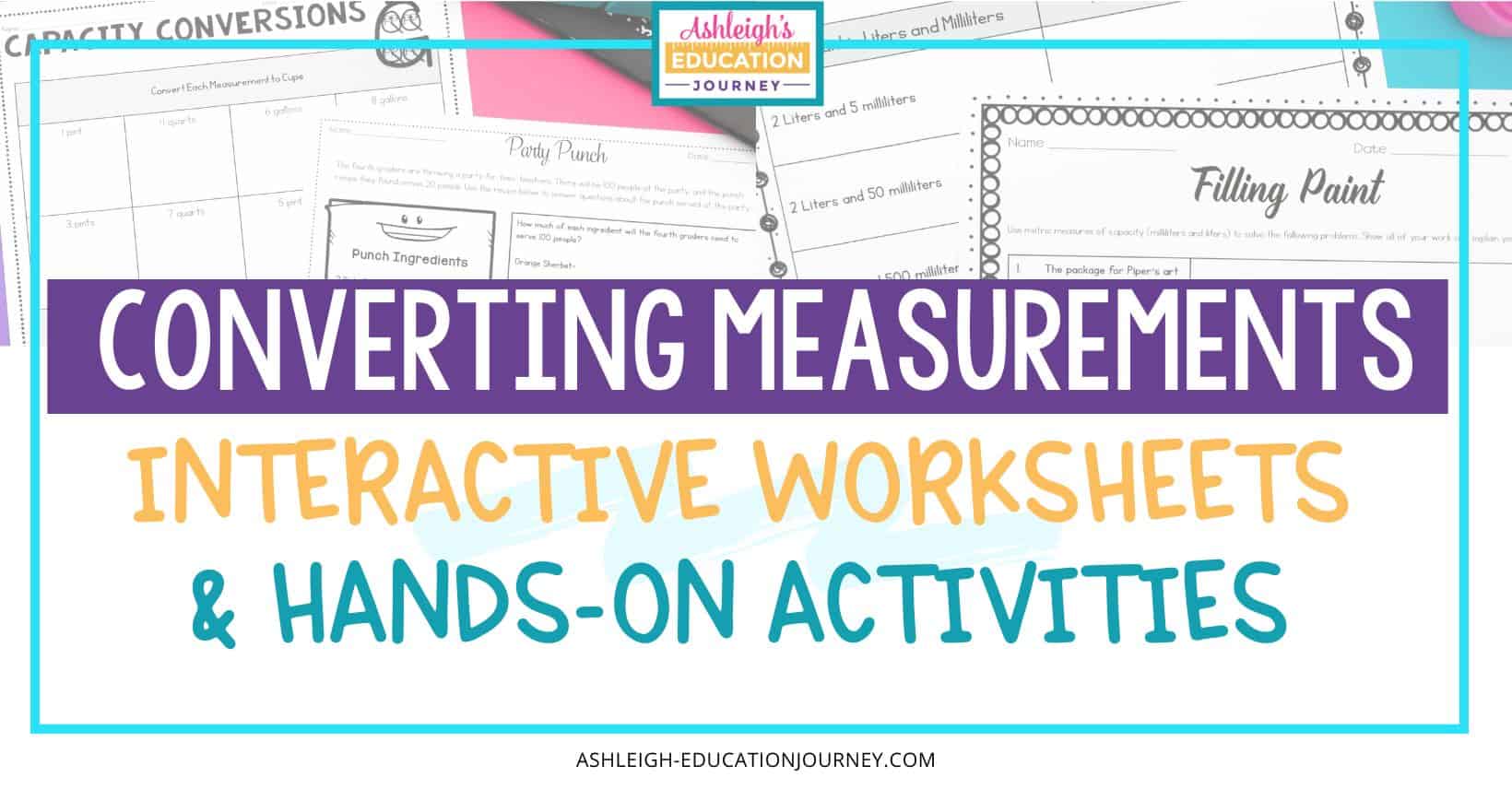
Converting measurements worksheets and activities are often hard to squeeze in to your math instruction. This topic is often taught toward the end of the school year, and we all know how easy it is to run out of time before testing-especially in math. It’s important to get as much out of your converting measurement worksheets and activities as possible. They need to pack a powerful punch. You can find each of the lessons below here.
Converting Measurements Worksheets – Capacity
I like to begin by reviewing the difference between the terms volume and capacity. Volume is the amount of space that an object takes up and capacity is the amount a container will hold. You can show students an example of a Cup, Pint, Quart, and Gallon and have students predict how many of each unit are required to fill the next size unit.
If you have time for exploration, have students using measuring cups to fill a pint container with water and record how many cups it took to fill the pint. Students then use the pint container to fill a quart container and record how many pints it took to fill a quart. Then, students can use the quart container to fill a gallon container and record how many quarts it took to fill a gallon.
I LOVE using the Gallon Kingdom video and pictorial representation of capacity conversions. This is almost always the most challenging units of measurement to memorize, and it gives students a memorization cue in converting capacity measurements. After watching the video, I like to complete the converting measurements worksheet together. Then, for problem solving and measurement application, students complete the Party Punch activity.
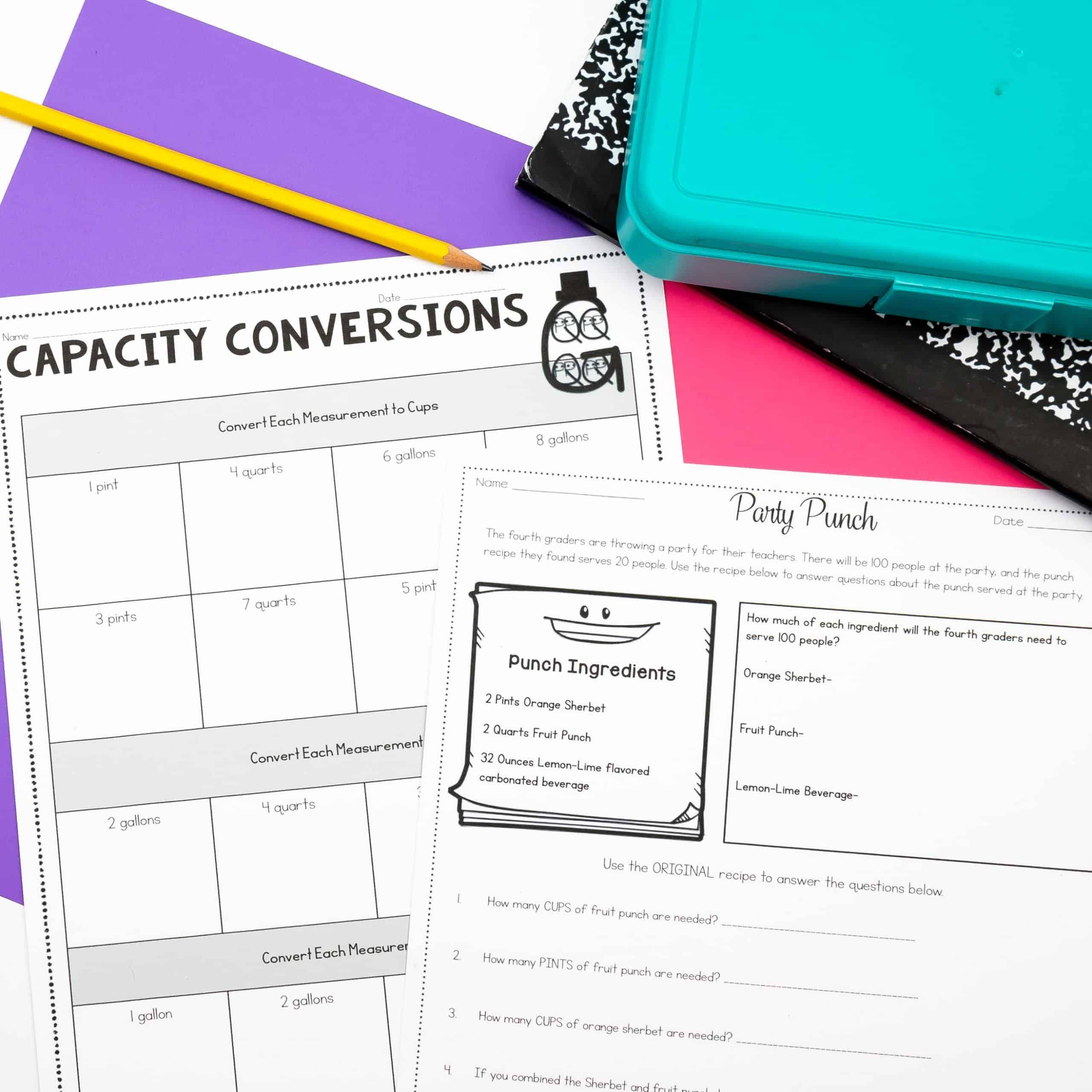
Metric Volume
When moving to these metric volume lessons, I again review the difference between the terms volume and capacity. Show students an example of a milliliter and a liter. Have students predict how many milliliters are needed to make a liter. Have students give examples of things that would be measured in milliliters (medicine, ingredients for cooking) and things that would be measured in liters (water in a bath tub, bottles of soft drinks).
If there is time for further exploration, teach students how to find volume using the displacement method. Students should read the volume of a large beaker of water (do not fill to the top). Students should then place a rock or golf ball inside the beaker. The water will rise, and students should record the new measurement of the beaker. Students can find the difference between the two measures to determine the volume of the golf ball or rock.
Once again, I like to complete the liters and milliliters converting measurements worksheet together. This gives students a little practice before moving on to their problem solving lessons. In that lesson, students solve four word problems involving metric volume, including some multi-step problems.
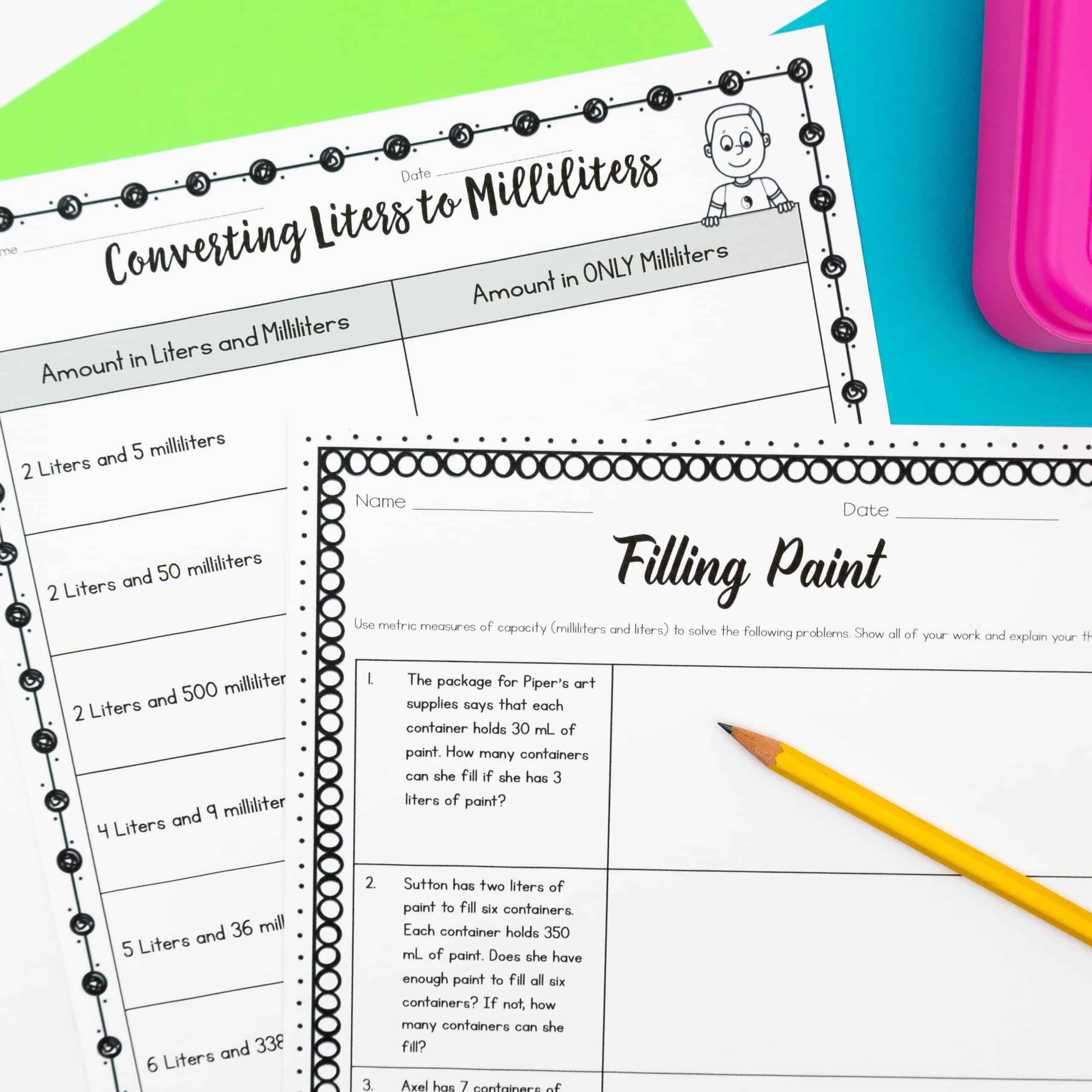
Converting Measurements Worksheets – Weight
When teaching weight conversions, be sure to review the difference between the terms mass and weight. Mass is a measure of how much matter an object has. Weight is a measure of how strongly gravity pulls on that matter. Show students an example of a few different types of scales (digital, spring, balance, etc.) and familiarize students with how to use the scales. Allow students to pass around various weights. Have students predict how many ounces are needed to make a pound. You may also want to give students time to share examples of things that would be measured in ounces and things that would be measured in pounds.
In the exploration portion of this lesson, students use a balance scale to develop familiarity with ounces and pounds. Students hold a pound weight and a one ounce weight and predict how many ounces they think are in one pound. Have students place the pound weight on one side of a balance scale. Then, one at a time, add weights to the balance scale until the scale is balanced.
You can complete the weight converting measurements worksheet together. Then, have students complete the weight word problems. In the activity, students solve five word problems involving customary weight. Some problems will be two step problems that require students to convert pounds to ounces.
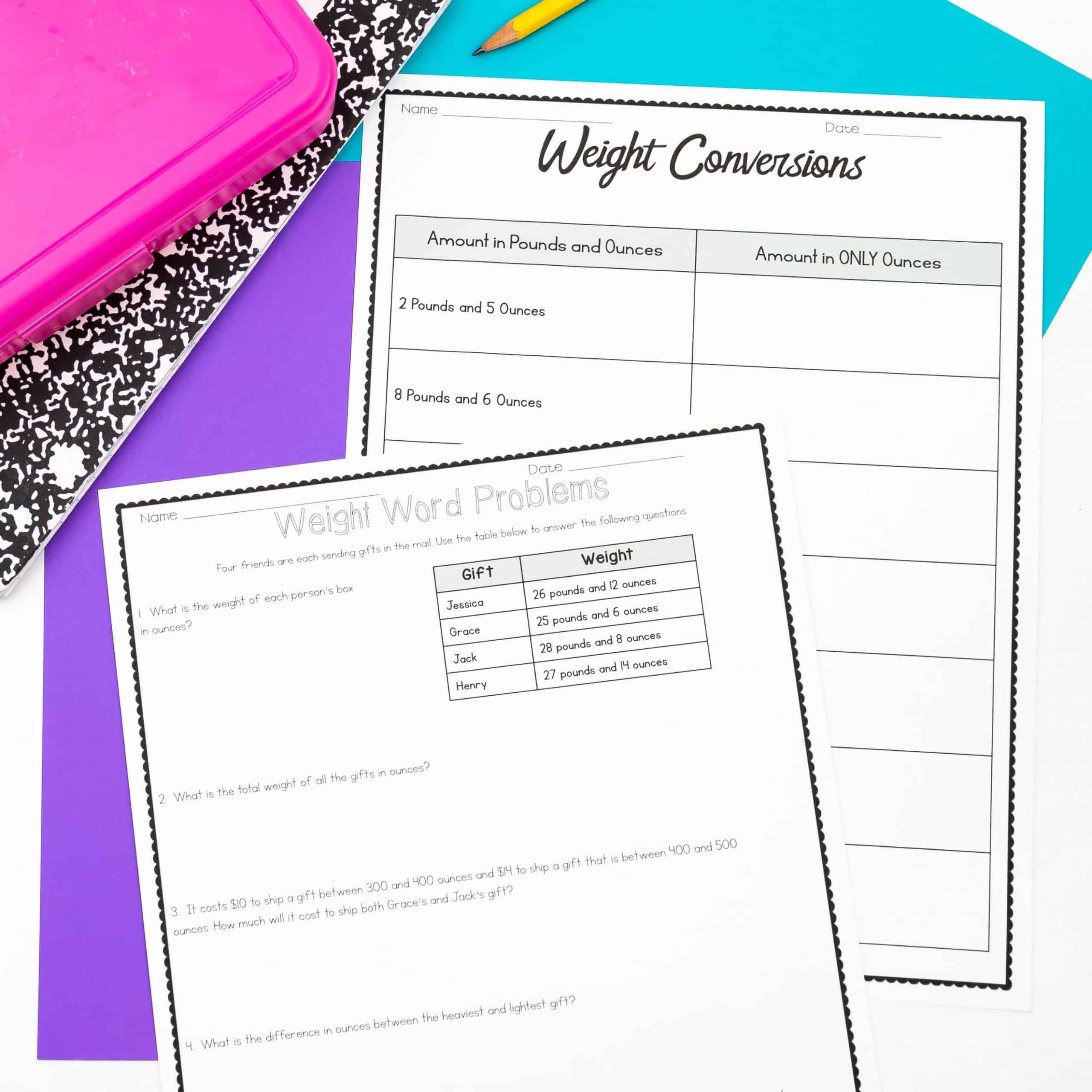
Mass Conversions
When teaching mass, review the difference between the terms mass and weight. Show students an example of a few different types of scales (digital, spring, balance, etc.) and familiarize students with how to use the scales. Allow students to pass around a gram weight and a kilogram weight and let students predict how many grams are needed to make a kilogram. Then, have students give examples of things that would be measured in grams and things that would be measured in kilograms.
In the exploration activity, students use a platform scale to order the mass of four different objects from the least mass to the greatest mass. Have students look at each of the four objects. Ask students which object they think will have the greatest mass and the least mass. Students should then find the mass of each of the objects and list the four objects in order from least to greatest mass.
Solve the mass converting measurements worksheet together. Then, students can solve mass word problems centered around the mass of ingredients needed for a baker’s recipes. Some of the problems will be two step problems that require students to convert kilograms to grams and a combination of kilograms and grams to only grams.
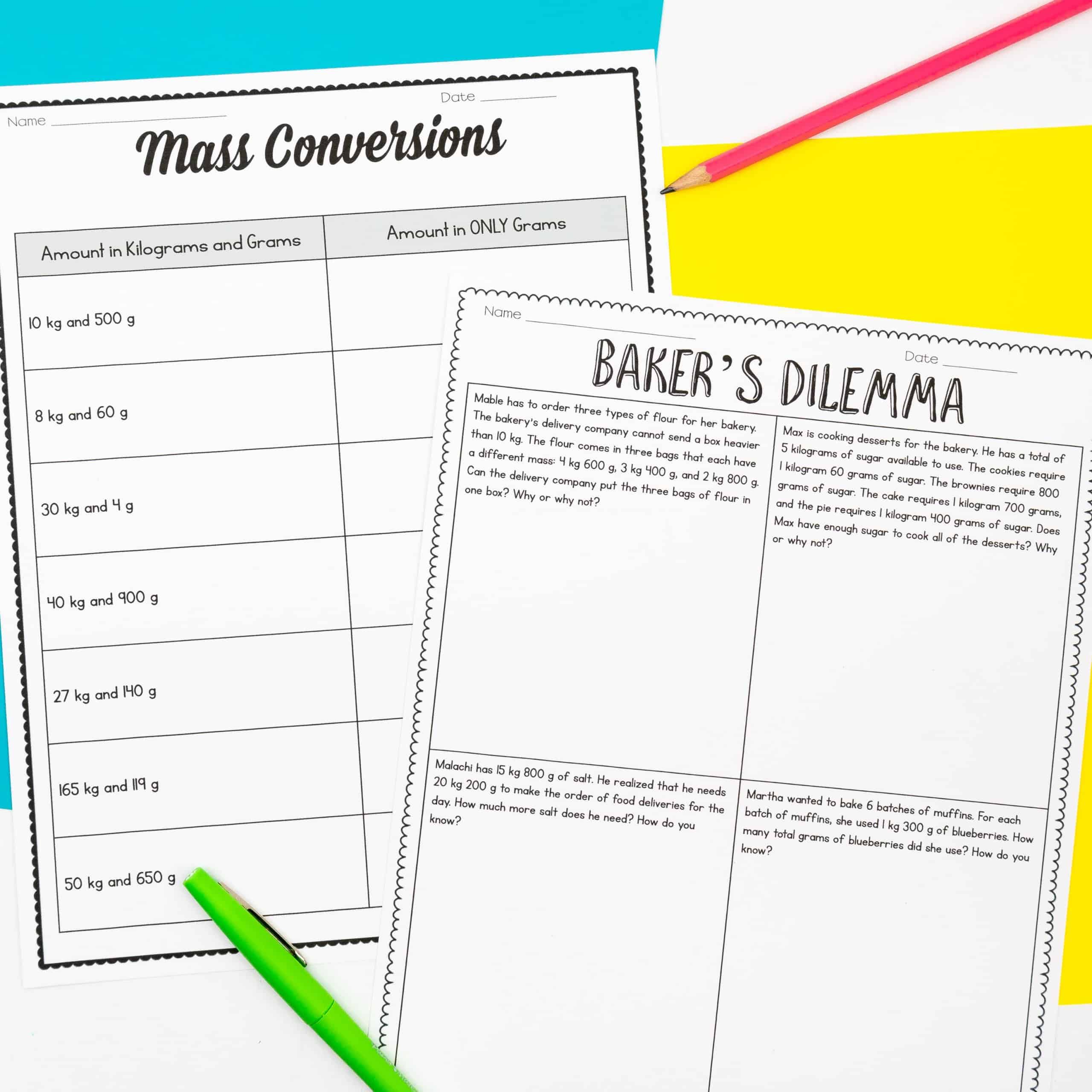
Converting Measurements Worksheets – Length
Give students time to share what they know about reading a ruler. At this point, most students should be able to correctly read a ruler to the nearest one-fourth inch. However additional instruction and practice is often needed for fourth graders. You can use this extra practice to squeeze in a few line plot activities.
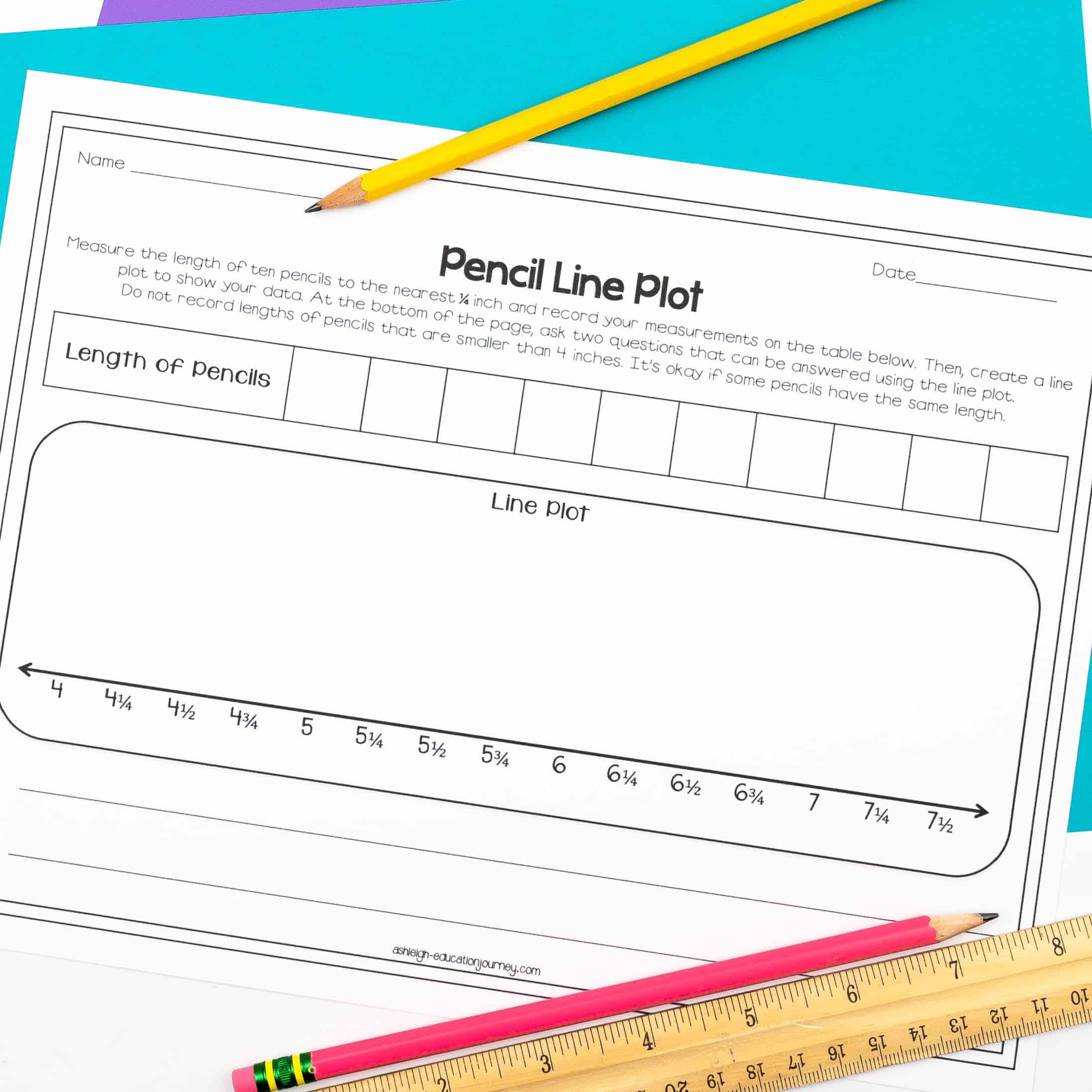
You can complete the length converting measurements worksheet together. In the problem solving portion of the lesson, students first fill out the missing pieces to a ruler. They should label the half inch, fourth inch, and eighth inch hash marks. In the second portion of the activity, students will read a data table and determine the length in inches of each piece of wood found in a workshop and determine who collected that piece of wood. This is always quite a challenge for my students.
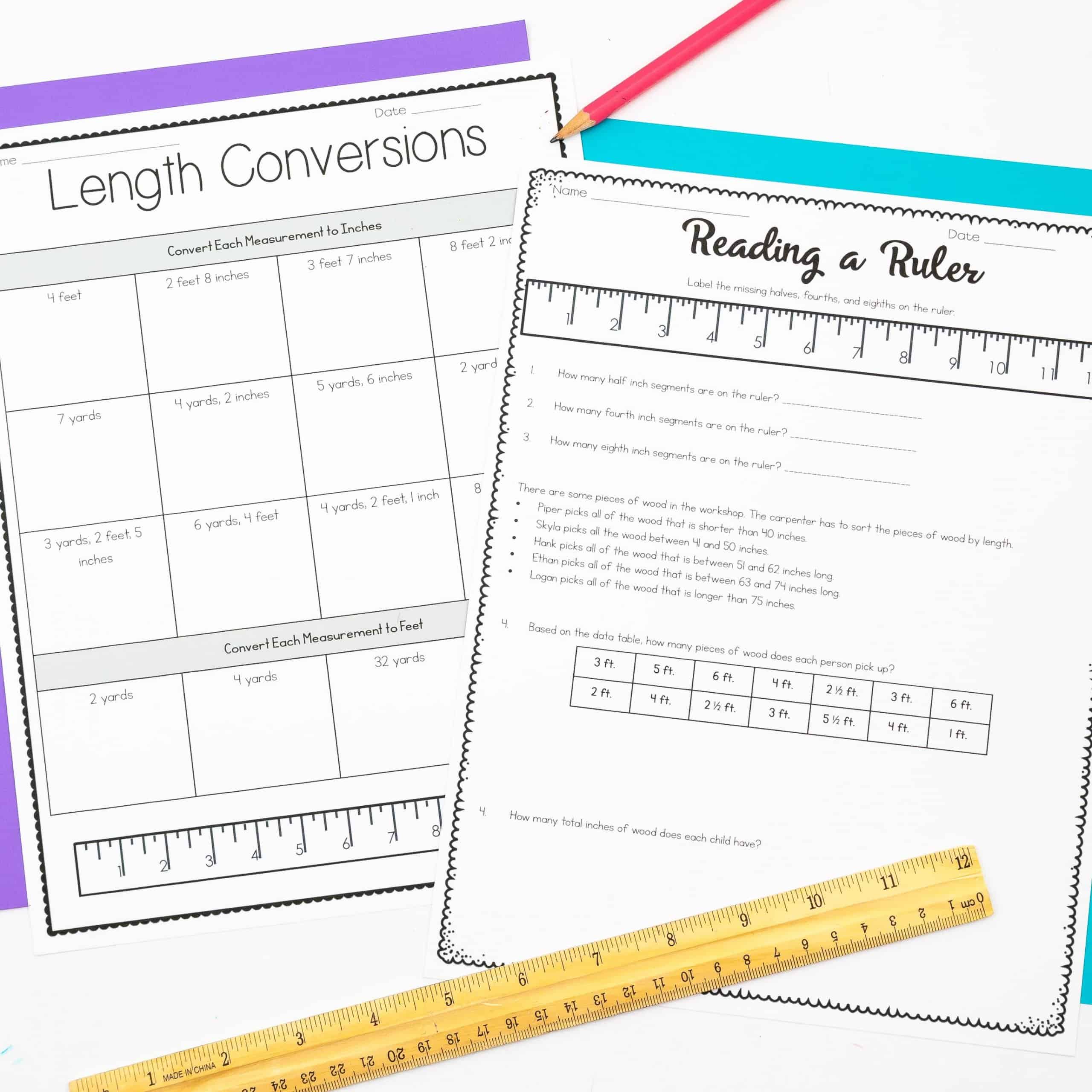
Metric Length
Students are always amazed at how much easier it is to convert metric measurements than standard measurements. In this activity, students determine how far their teacher ran this week. I use teacher as a joke, but you can substitute any name or person for the role. Students convert kilometers to meters and centimeters and will convert meters to centimeters.
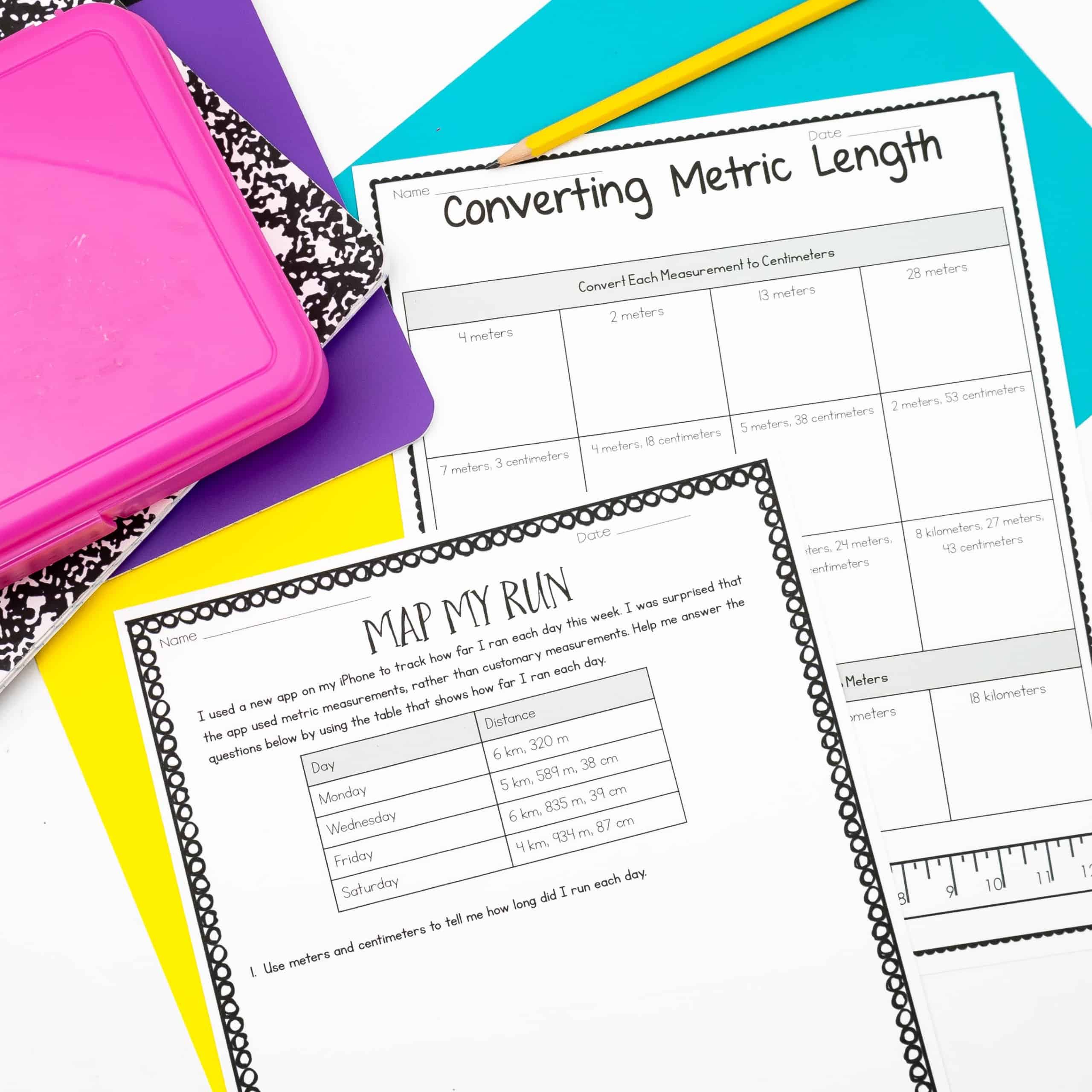
Converting Measurements Worksheets – Time
Time is not easy for students. Even in fourth grade, many students have trouble reading a clock. It’s easy to get stuck on this important life skill, but I try to focus instruction on grade level standards. I save reading a clock for small group lessons.
Begin the lesson by reviewing how to determine the elapsed time. Start with finding the elapsed time between hours, move to finding the elapsed time between hour and a half, and then hour and 15 minutes. Once students show proficiency, move to finding the elapsed time to the five minutes and then exact minute.
I like to complete the time converting measurements worksheet together. Then, students solve time conversion problems using a daily schedule. A fun extension to this lesson is having students determine their age in months, weeks, and days.

You can find each of these lessons in this measurement resource. If you’d like to read more about teaching upper elementary math, be sure to check out this post!


